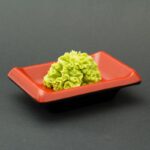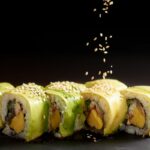When you add even a tiny dab of wasabi to a piece of sushi, you should expect to feel the effects. There should be a sudden burst of heat that seems to go all the way down your nasal passages.
If you are used to eating spicy food then this may seem to be a similar feeling that you would experience if you were eating Chili Peppers.
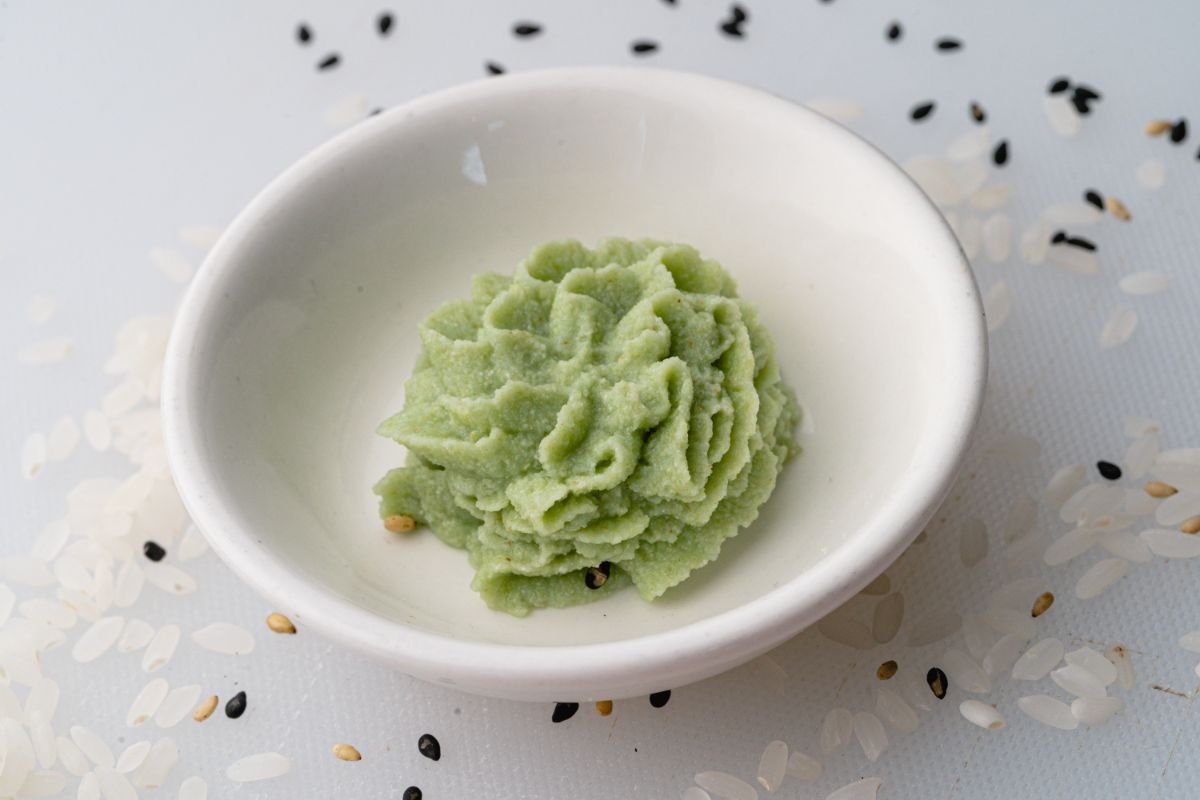
That may have you wondering if you can directly compare the spiciness of wasabi to that of Ghost Peppers.
In this guide, we will ask; is wasabi hotter than Ghost Peppers? We will also consider the different types of hotness between wasabi and peppers, the heat attributes, and compare wasabi to other peppers.
Is Wasabi Hotter Than Ghost Peppers?
The Scoville scale is the accepted method for measuring how hot and spicy peppers are. Specific peppers featured on the scale include Bell Peppers, Cayenne Peppers, and Ghost Peppers.
Alas, the Scoville scale cannot be applied to wasabi as it does not belong to the pepper family.
Also, the wasabi that most people have tried is typically horseradish mixed with green food coloring. The mixture forms a paste and it could also include Black Mustard Seeds which are considered to be relatively hot.
If you were to look at the Scoville scale, you can try to ascertain the discomfort caused by eating wasabi.
You could certainly expect the hotness to exceed that of a Bell Pepper yet it may find parity with a Habanero or Jalapeño pepper.
As a Ghost Pepper sits at the top of the Scoville scale with between 850,000 and 1,040,000 SHU (Scoville Heat Units), it is certainly hotter than wasabi.
A Different Type Of Hotness
Eating wasabi can produce a hot sensation similar to that of eating a Chili Pepper yet feel distinctly different. The heat from eating wasabi tends to affect the nasal passages.
However, if you were to eat a Chili Pepper you can expect a lot of the heat to remain on the tongue.
The different types of hotness come from the individual substance’s chemical composition. You can certainly compare the chemical composition of a Chili Pepper with that of wasabi.
For instance, wasabi will contain allyl isothiocyanate which produces those vapors. If you were to examine a Habanero Pepper, you will find that the chemical creating the hotness is capsaicin.
Different chemicals produce different levels of spiciness. In peppercorns, such as Black Pepper, you can expect the peppiness to come from piperine.
For Ginger, it comes from gingerol while in Onions and Garlic that spiciness will come from allicin. Each of those chemicals will produce a certain burning sensation but a different one for each substance.
The Heat Attributes
As well as the Scoville scale, different heat attributes can be used to compare Chili Peppers with wasabi and other spicy foods.
The development of heat can be an immediate hit or it can be delayed by between five and over 30 seconds. Then there is the duration of that burning sensation which can last for a few seconds or it can last for hours.
Even where the heat can be felt differs from various substances. Wasabi is known to hit the nasal passages while chili peppers can hit the tip of the tongue, the mouth, the lips, and the throat.
Consider the feeling that the spicy food produces as it could be a sharp intense pain or a relatively flat sensation.
Finally, there is the intensity which is typically measured on the Scoville scale in Scoville Heat Units and varies from mild to extra hot.
If you were to look at the heat attributes of wasabi, the development would be rapid and the duration would be relatively brief.
The location of the sharp heat sensation will be at the nasal passage with a feeling akin to pin pricks and a mild intensity.
For a Habanero Chili Pepper, the development is delayed while the duration lingers. You can expect the heat to be located at the back of the throat with a flat feeling and a very hot intensity.
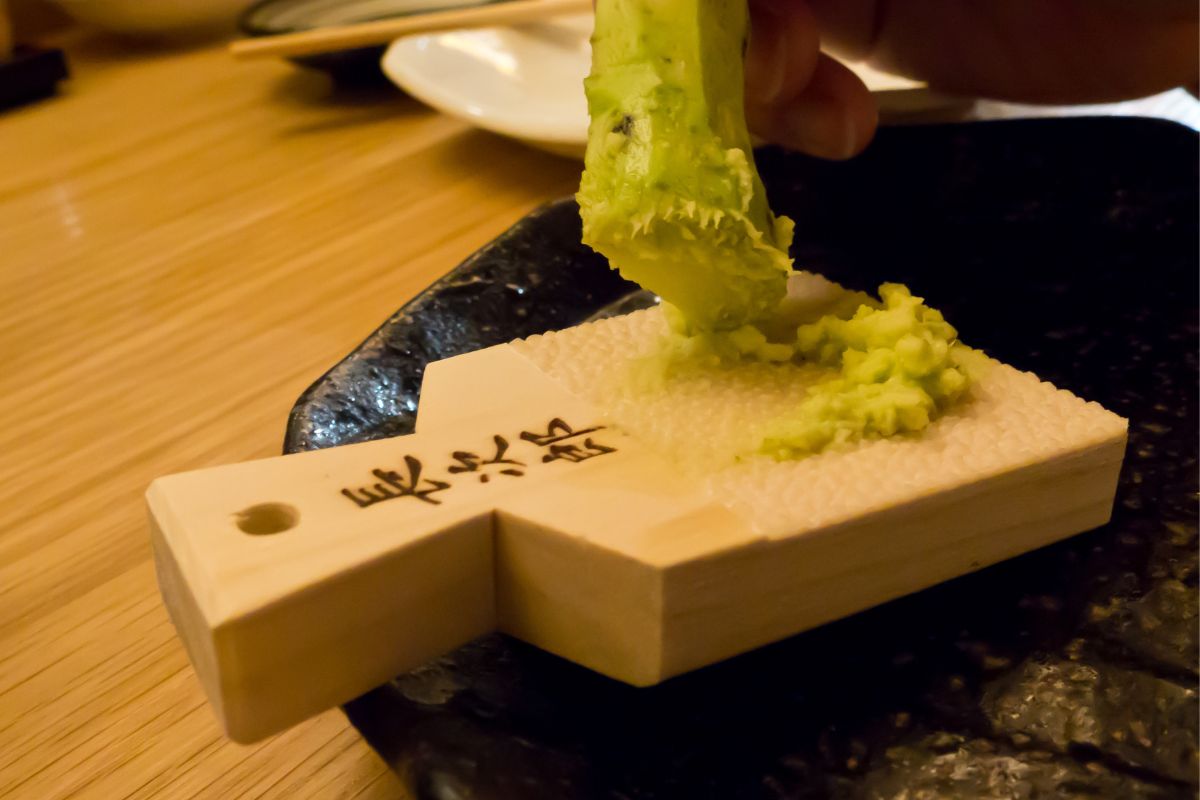
Comparing Wasabi To Other Peppers
Bell Peppers sit on the bottom of the Scoville scale as they are undoubtedly mild with no SHUs. Further up the scale are Banana Peppers which have between 100 and 500 SHUs.
Though they are not considered hotter than wasabi, a Jalapeño Pepper with between 2,500 and 8,000 SHUs could be. With between 100,000 and 350,000 SHUs, Habanero Peppers certainly are considered hotter than wasabi.
As you get to the top of the Scoville scale you find the hottest chili peppers known to man. That includes the Ghost Pepper, which has between 850,000 and 1,040,000 SHUs.
Right at the top of the Scoville scale is the Carolina Reaper which has between 1,600,000 and 2,200,000 SHUs.
Final Thoughts
Though the Scoville scale cannot be applied to wasabi as it is not a pepper, you can consider its spiciness. That heat has different attributes so there is no such thing as a genuine comparison.
As Ghost Peppers are featured at the top of the Scoville scale, few substances are known to be hotter, certainly not wasabi.
However, if you were to specify the heat level it would be close to that of Jalapeño Peppers which have between 2,500 and 8,000 SHU.
Frequently Asked Questions
When you are looking to judge the spiciness of Chili Peppers, you will come across the Scoville scale. This was created by Wilbur Scoville all the way back in 1912.
It is the official means of measuring how spicy a range of Chili Peppers are and even comes with its own unit of measurement. A SHU is known as a Scoville Heat Unit and is a direct measurement of the capsaicin content present in peppers.
When you are served a range of fresh sushi dishes in a Japanese sushi restaurant, you are likely to be given wasabi and thin slices of ginger on the side.
While you can expect to feel a heat sensation from wasabi, it is unlikely that the ginger will produce the same effects. Though ginger still has a chemical composition that produces heat attributes, the substance is used to cleanse and refresh the palate.
On the Scoville scale, you can expect Fresh Ginger to have around 60,000 SHUs. Ground Ginger should be considered hotter as it has around 160,000 SHUs.
Both of these forms of ginger are thought to be hotter than wasabi yet the ginger you get with sushi is pickled which reduces its hotness.
Then there is Black Pepper which has a Scoville rating of around 100,000 SHUs which should be closer to the heat sensation of wasabi. Though you would not add Tabasco Hot Sauce to sushi, it can be hotter than wasabi with between 100 and 800 SHUs.
- 16 Best Websites To Watch Japanese Movies With English Subtitles - May 11, 2023
- Is ZIPAIR The Best Airline For Traveling To Japan? - May 11, 2023
- Ryu Murakami Vs Haruki Murakami – Which One Should You Read? - May 11, 2023

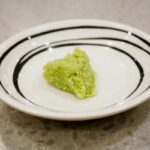


![How To Eat Wasabi The Japanese Way [Ultimate Guide] How To Eat Wasabi The Japanese Way [Ultimate Guide]](https://justaboutjapan.com/wp-content/uploads/2023/03/How-To-Eat-Wasabi-The-Japanese-Way-Ultimate-Guide-150x150.jpg)
